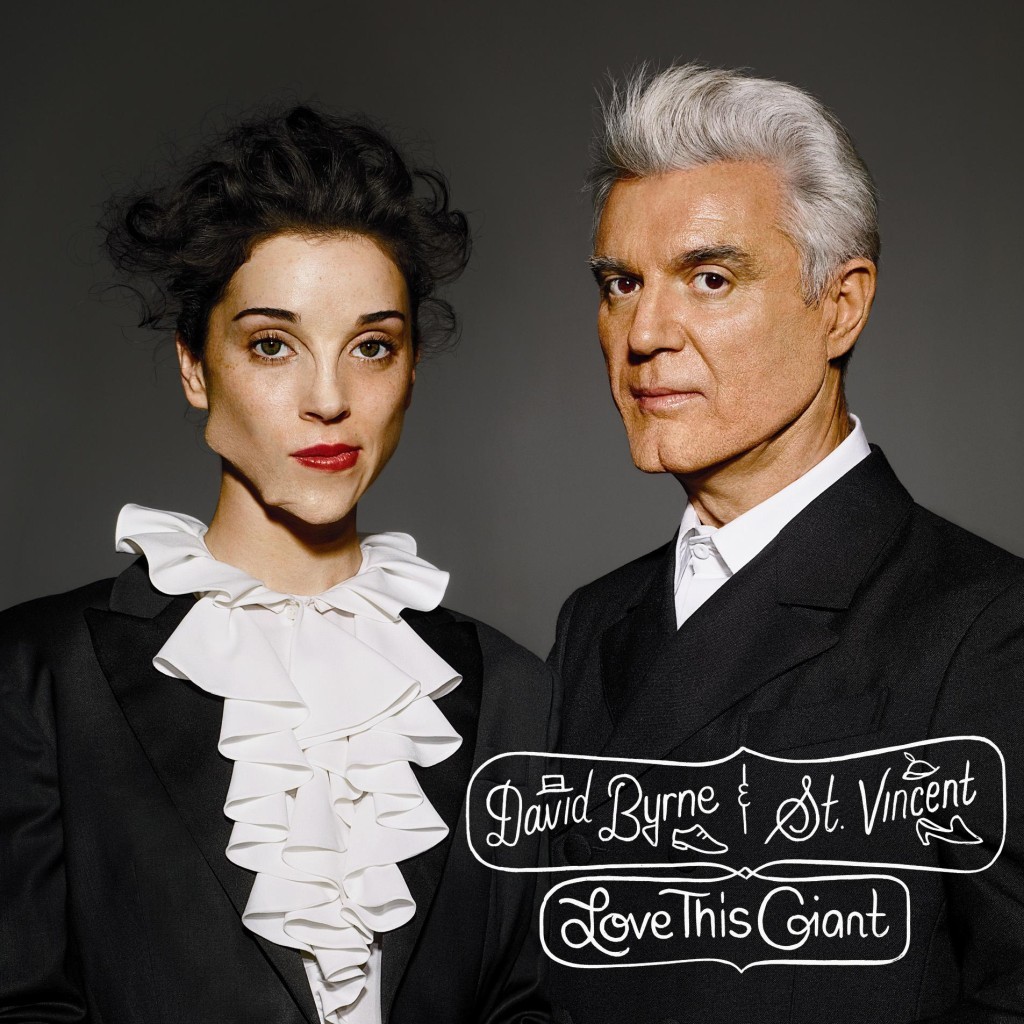The horned beauty that is ‘Love This Giant’
By Angela Espinoza, Arts Editor
5/5
Annie Clark has been the talk of the town ever since this year’s Sasquatch festival. Better known as St. Vincent, Clark’s music has evolved beyond previously similar competitors such as Regina Spektor, exercising her talents most famously on her 2011 album, Strange Mercy. Clark’s immeasurable growth has made this a big year for her, even more so now with the release of her first collaborative album, and Talking Heads David Byrne’s third in a row, Love This Giant.
The two were brought together for a piece on Byrne’s 2010 concept album Here Lies Love, with Clark performing vocals on the track “Every Drop of Rain.” It didn’t take long for these multi-talents to see what more they could create together, and two years later, Love This Giant came to be.
But while Clark and Byrne have their own unique styles to share, the album does not focus on the two of them coming together. Byrne’s been doing this for a long time, trying his hand at just about every outside form of music, while Clark has somewhat recently nailed her own sound; there’s not much more evolving at this point. That said, what makes Love This Giant so fantastic is Clark and Byrne’s experimentation with brass instruments, the true focus of the album.
The split second one starts the opening track, “Who,” they’re welcomed with a bubbling silence and brass horns, eventually met by Byrne asking, “Who will be my valentine?” From thereon out, what happens next can only be best described as magic—who knew St. Vincent and David Byrne’s vocals matched so well?
While the album focuses on the use of brass, Love This Giant is not so much a jazz album as it is an experiment in pop music. Any one of the album’s tracks could be plucked and placed on a chart somewhere, and it would branch out and blossom, hiding the shame of the previous chart toppers underneath. This is what Clark and Byrne especially do best: taking something familiar and exercising it to its potential.
Love This Giant features something of an evolution between the tracks—not so much a concept as perhaps a trend. The album begins with “Who,” with the two looking for someone to join each other. We then come to “Weekend in the Dust,” in which Clark dominates by making her own set of evaluations. The two of them are brought together once again on the following track, “Dinner for Two,” in which Byrne begins by describing each aspect of the potential scenario, with Clark eventually joining in. This trend continues in the next set of three songs: “Ice Age,” “I Am An Ape,” and “The Forest Awakes”—the latter being the only song on the album where one of them (Clark) takes the lead on a song they themselves did not write.
The seventh track, “I Should Watch TV,” bring Byrne and Clark’s songwriting skills to their full potential, with one of the lines in the track being the titular “love this giant;” the line refers to the appraisal of technology, followed not too long by a sudden melancholic turn in the track, along with the rest of the album. Melancholic, but not hopeless, as can be heard instantly in the tracks “Lazarus,” the term of which comes from a Bible story in which Jesus raises one Lazarus from the dead, and “Optimist,” featuring the repeated line (sung by Clark), “how it is is how it ought to be.”
As for the last three, we’re given two very intergalactic tracks (“Lightning” and “Outside Of Space & Time”) which bookend a very Mardi Gras-esque hybrid of party and ballad (“The One Who Broke Your Heart”). If Clark and Byrne are anything, they’re delightfully strange, but it’s that which makes the album the absolute success that it is.
Love This Giant was released on September 10, and is soon to be followed by a cross North America tour—get your tickets now!

